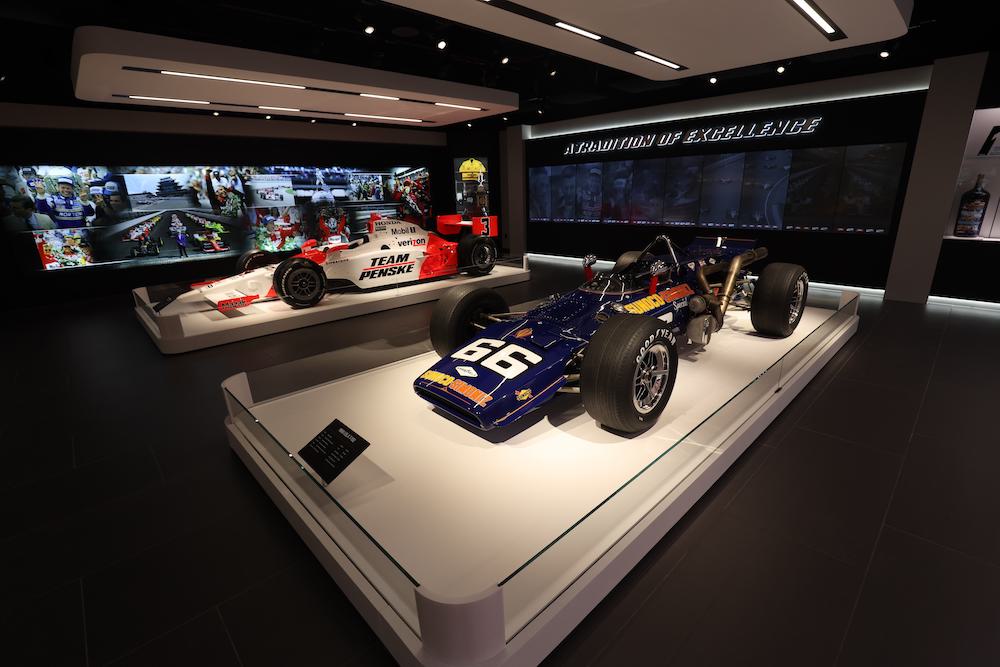
The Indianapolis Motor Speedway Museum, in its completely revamped form, has been open for two months now. Its president Joe Hale and head curator Jason Vansickle spoke to RACER about how the transformation has been received by the public.
RACER: What feedback have you received regarding the museum?
Joe Hale: We’ve exceeded every projection we had in terms of attendance, in terms of revenue earned, so we’re very pleased with the initial reception. There haven’t been any naysayers: people have been positive about the museum and their experience there, and feel it does a great job of fulfilling our mission of preserving the stories about the 500, and other history around here. Jason and his group have done a tremendous job of how the cars are displayed.
RACER: How often will there be special exhibitions and how often will displays be rotated?
Jason Vansickle: We have a five-year plan in place for rotating exhibitions, not only large ones like our “Best of the best” celebrating the four-time Indy 500 winners, but also our feature gallery, the Bobby Rahal Family gallery, and even the mezzanine and Gasoline Alley gallery. The Museum as people saw it for the first two months will remain the same for the summer months but we look to change out the Bobby Rahal gallery, the NASCAR Brickyard 400 gallery will also be changed a couple of times this year, in the fall and winter time. Also we have another exhibition which will replace the Best of the best, and that’s the Chip Ganassi Racing gallery, coming in late 2025. So yes, there’s plenty of rotation coming over the next nine months that will keep people returning.
RACER: Has it all transpired in the manner you aimed for when the renovation was first mooted in 2017?
JH: Yeah, 2016-’17 was when the idea was first proposed, and at the time the Board decided for a variety of reasons not to move forward. So then five years ago we talked about reviving a variation of that plan, and when Roger Penske bought the track, they were involved in some early discussions too, and he challenged us. He said, I want you to double the size of the Museum but it can’t grow upward or outward! Interesting…
But as you know, previously the basement was off-limits – you had to know someone to go down there and see the cars that just didn’t fit on the ground level, so we’ve now integrated the basement as part of the general admission [just $25 for basic adult ticket, concessions for seniors, military personnel and children – visit https://imsmuseum.org/tickets/
Honestly, I’d say the reality exceeds the plan that we had. And just watching people react when they come into the museum is great. They’re getting to learn about the history of the track, the technology progression of the cars, and why the place is so important and iconic not just in Indiana or in this country but around the world. Seeing people understand that and respect it too has been so gratifying for all of us.
[embedded content]
RACER: What’s been the most popular exhibit in terms of folks wanting pictures?
JH: Probably the Starting Line Experience, where you get to stand on the grid behind the front row, looking down to Turn 1, pitlane and Pagoda to your left, wall of grandstands to your right. We said our objective there was to get cheers, tears and goosebumps, and that’s what we hear from most people. Even if you’re not a car person, it really gives you a sense of what this place is about on raceday in six-plus minutes, from the firing of the cannon at 6 a.m. when the gates open, to the race itself and the call of “Drivers, start your engines!”